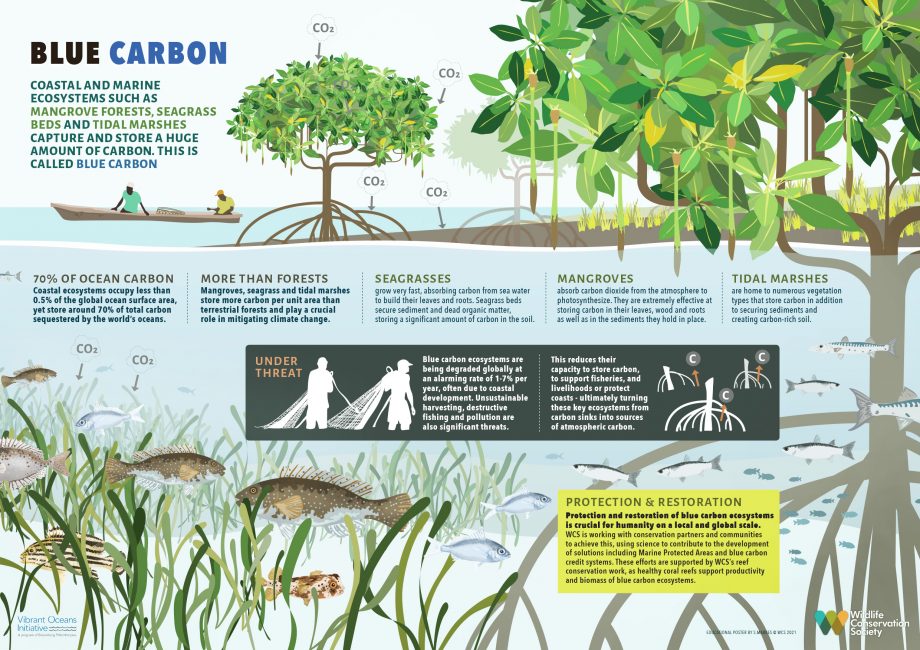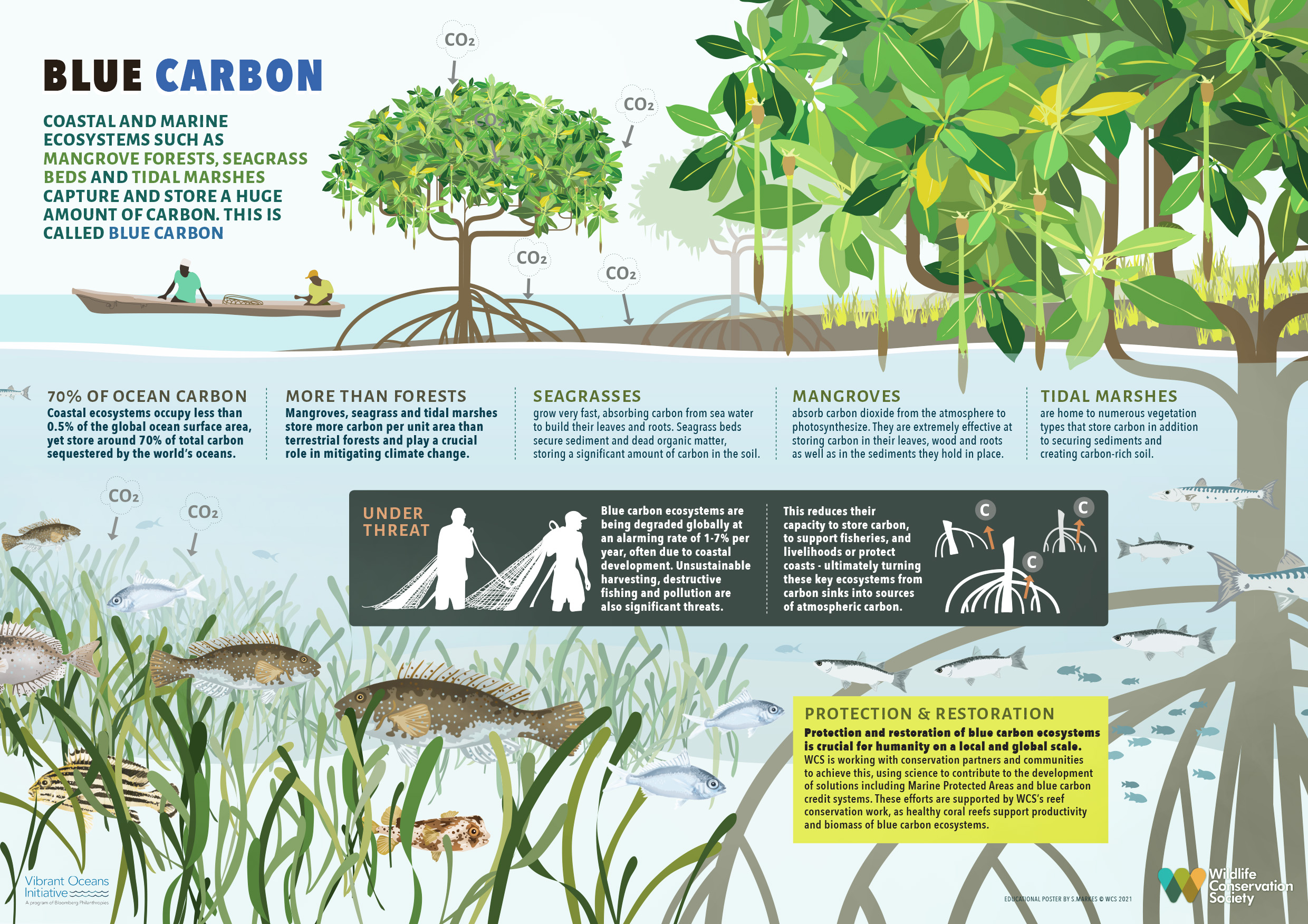
December 2, 2021
What is Blue Carbon and Why is it Important?
- as seen by -
 Sarah Markes
Sarah Markes
Coastal and marine ecosystems such as mangrove forests, seagrass meadows and tidal marshes capture and store a huge amount of carbon. This is called ‘blue carbon’ to distinguish it from land-based carbon sequestration. There has been increasing conservation focus on so-called ‘blue carbon ecosystems’ in recent years, given their importance in climate change mitigation, their biodiversity value, the key role they play in coastal livelihoods as well as the significant threats they face across the world.
Together, mangroves, seagrasses and tidal marshes cover around 193,051 square miles (50 million hectares) globally, across every continent apart from Antarctica. Mangroves grow in tropical and subtropical coastal areas, seagrasses in shallow salty and brackish waters globally, and tidal marshes – as the name suggests, are found in sheltered coastal areas which flood and drain according to the tides.
Mangroves, seagrasses, and tidal marsh vegetation absorb carbon from the air and water to photosynthesize. This carbon is stored in their leaves, branches, and roots, which also hold sediments in place – thus creating very efficient ‘carbon sinks’. In fact, research shows that these ecosystems store more carbon per unit area than terrestrial forests. However, like forests, if these areas are degraded, they release this carbon back into the atmosphere, contributing to global warming. Worryingly, almost a third of the world’s seagrass has been lost in the last century and a half, the world’s mangroves are being lost at a rate of 2% a year, and less than half of the world’s salt marshes now survive.
But with global focus and awareness, there is hope. Blue carbon ecosystems were discussed by world leaders (including US President Joe Biden) on the High-Level Panel for a Sustainable Ocean Economy at the COP26 climate summit. They stated that increasing protection for blue carbon ecosystems would prevent over a billion tons of carbon from entering the atmosphere by 2050.
On a more local level, we created this educational graphic to highlight the value and importance of blue carbon ecosystems. Please email sarahindar@gmail.com for a print resolution copy. Currently available in English and Portuguese.
EDITOR’S NOTE: More educational materials by Sarah Markes can be seen here.




Leave a Comment
Pingback: How kelp can help – Seaweed
Pingback: Big Claims, Small Expenditures: Battered by Heatwaves and Floods, Sindh spent less than half its Climate Budget in 16 years – thecitizenry
Pingback: What Is ‘Blue Carbon’ And Why Is It Important? | Devon Geography
Njue Mugai
January 12, 2024 at 3:18 am
What about the Highland blue carbon? In the Kenyan highlands, there exists or existed wetlands that are/were a source of many rivers and carbon sinks. Because of the population pressure, many of them have been drained for cultivation and the wetland sedges and other plants lost.There is a need to preserve the few remaining ones and reclaime the degraded ones.